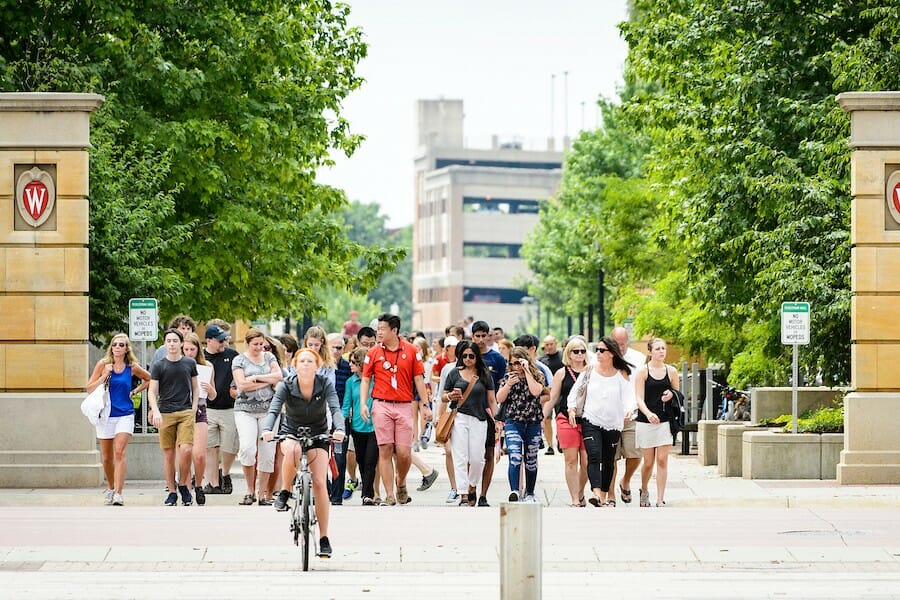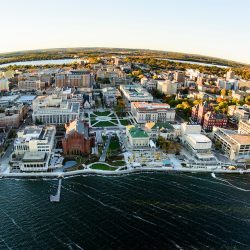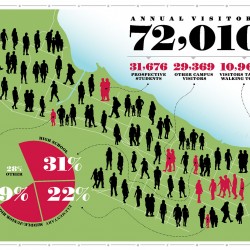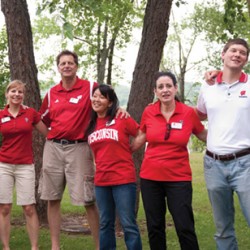Walking, Talking, and Gawking
The official UW–Madison tour brings a magical campus to life.
How do you sell the spacious UW–Madison campus to a stranger in just 75 minutes?
That’s the tall order for the university as it receives record numbers of student applications and visitors. Last year, some 46,000 prospective students and family members went on the UW’s official campus tour.
“The tour is one of the most — if not the most — important parts of the college decision process,” says Nancy Hoffman ’96, MS’03, director of Campus and Visitor Relations, which organizes the visits in partnership with the Office of Admissions and Recruitment.
Campus tours have likely existed in some form since the beginning of the university, says Greer Davis, associate director of communications for the admissions office. For decades, the sprawl of campus has provided a distinct challenge. A tour booklet from the 1960s suggested that “a stroll across the Madison campus … requires a stout pair of shoes and the sort of leg muscles Wisconsin students soon develop.”
Today, the main campus spans 936 acres, which puts limits on what visitors can see and do in just over an hour. The 1.5-mile walking tour circulates through campus staples — Memorial Union, the Terrace, Library Mall — as well as a residence hall, library, several classroom buildings, and a historical marker that recognizes the land as the ancestral home of the Ho-Chunk people and acknowledges their forced removal.
The university’s foundation was built atop Bascom Hill, where the steep slope offers a beautiful vantage point but makes travel troublesome. The university arranges an alternative route to accommodate visitors with accessibility needs. “Our goal is to be universally accessible,” Hoffman says, adding that other plans include offering multilingual and virtual-reality options and sharing more stories about historically underrepresented students.
April, July, and October are the busiest months for tours, with as many as 3,000 visitors per week. Participants are split into small groups and matched with a tour guide. The guides — highly trained undergraduates — have required talking points but are encouraged to improvise and add personal touches. Their challenge? To bring a magical campus and its robust opportunities to life, even when it’s below freezing.
Tour guide Emily Cerbins x’20 remembers two California parents who insisted that none of their children would want to attend a university that gets snow in April. “But by the end of the tour,” she says, “their daughter told me she had fallen in love with the campus.”
Preston Schmitt ’14 is a senior staff writer for On Wisconsin.
Published in the Spring 2020 issue




Comments
No comments posted yet.